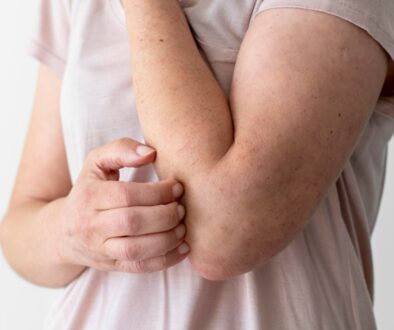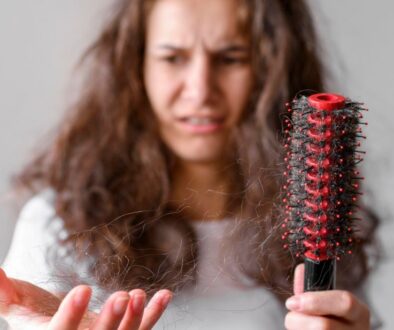Cardiac Arrest In Dubai
Cardiac Arrest: Causes, Symptoms & Treatment
This in-depth guide will thoroughly explore the causes of cardiac arrest, such as heart attack, heart failure etc as well as the symptoms and treatment choices such as angioplasty, valve repair etc available in Dubai, . With insights from Dr. V J Sebastian, Senior Consultant Cardiologist at our Lifeline Clinic in Dubai, we aim to provide valuable information about the cardiac arrest to understand and effectively address this life-threatening event. Dr. Sebastian’s expertise in cardiovascular health ensures the reliability and accuracy of the information presented here.
What is Cardiac arrest?
When the heart stops functioning suddenly, it affects both breathing and consciousness, leading to cardiac arrest. It occurs when the heart’s electrical system malfunctions, causing an irregular heartbeat (arrhythmia). This irregular heartbeat disrupts the heart’s pumping action, causing blood flow to stop. If not promptly addressed, cardiac arrest can result in death in a matter of minutes.
When an individual experiences sudden cardiac arrest, administering CPR and promptly using an automated external defibrillator (AED) can substantially increase the chances of survival. Seeking immediate medical assistance is crucial for the individual’s recovery.

Causes of cardiac arrest
- Coronary artery disease: It occurs when the arteries become narrowed or blocked while delivering blood to the heart, reducing blood circulation to the heart muscle. In such cases, an angioplasty procedure is typically performed.
- Heart attack (myocardial infarction): A heart attack can trigger cardiac arrest by causing damage to the heart muscle, disrupting its electrical activity.
- Arrhythmias: Abnormal heart rhythms, like ventricular fibrillation or ventricular tachycardia, can result in sudden cardiac arrest when the heart’s electrical system doesn’t work properly.
- Heart failure: Cardiac failure occurs when the heart struggles to pump blood efficiently. This may result in fluid accumulation in the lungs and other parts of the body. Hence increasing the risk of cardiac arrest.
- Structural heart abnormalities: Conditions such as hypertrophic cardiomyopathy, congenital heart defects, or abnormalities of the heart valves can increase the risk of cardiac arrest.
Symptoms
Sudden cardiac attack often occurs suddenly and without warning & symptoms. The immediate and severe symptoms include:
- Collapse
- Absence of a pulse
- Cessation of breathing
- Loss of consciousness
Occasionally, there may be warning signs(symptoms) just before the cardiac attack, such as:
- Chest pain
- Difficulty breathing
- Weakness
- Rapid, fluttering, or pounding heart palpitations
Diagnosis
To diagnose the cause of a cardiac event and prevent future occurrences of sudden cardiac arrest, your healthcare provider may conduct various tests, including:
- Electrocardiogram (ECG or EKG)
- Heart MRI
- Blood tests to check electrolyte levels crucial for heart function
- Ambulatory monitoring
- Echocardiogram
- Cardiac catheterization
- Electrophysiology Study
Since sudden cardiac arrest often leads to death, many are identified after death.
Cardiac Arrest Treatment
Cardiac treatment involves a multifaceted approach tailored to the individual’s condition. Initial emergency measures for cardiac arrest include cardiopulmonary resuscitation (CPR) and defibrillation to restore heart rhythm. Long-term management may consist of lifestyle modifications such as diet and exercise, medications to control blood pressure, cholesterol, and heart rhythm, and procedures like angioplasty or surgery to address blockages in the arteries. Angioplasty and other surgeries are utilized for heart attacks to quickly restore blood flow to the heart muscle, prevent further damage, and improve the patient’s chances of recovery. Regular monitoring, follow-up appointments, and adherence to treatment plans are essential to prevent complications and improve heart health.
Procedure Treatment
- Angioplasty: It is a procedure that aims to open up narrowed or blocked arteries, often seen in the coronary arteries that transport blood to the heart muscle. In this minimally invasive technique (angioplasty), a slender and flexible tube, known as a catheter, is meticulously introduced into the blood vessel, typically located in the groin or wrist, and then advanced into the obstructed artery. After positioning, a tiny balloon located at the catheter’s end is expanded to press the plaque buildup against the artery walls, thereby reinstating blood flow.
- Coronary artery bypass grafting (CABG): This surgery involves rerouting blood flow around narrowed or blocked coronary arteries using blood vessels harvested from elsewhere in the body, such as the leg or chest wall. CABG is typically performed to treat severe coronary artery disease or after a heart attack.
- Valve repair or replacement: Surgery may be needed to repair or replace damaged heart valves, which regulate blood flow within the heart. This can involve repairing the valve leaflets or implanting a mechanical or biological valve.
- Cardiac ablation: This procedure treats certain heart rhythm disorders (arrhythmias) by destroying or isolating abnormal electrical pathways in the heart tissue. It is often performed using catheters inserted through blood vessels in the groin or wrist.
Cardiac Arrest Prevention
Preventing cardiac arrest involves addressing risk factors and adopting healthy lifestyle habits. This entails quitting smoking, maintaining a healthy weight through balanced nutrition and consistent physical activity, managing conditions such as hypertension, diabetes, and hypercholesterolemia, and abstaining from illicit drug use. Routine medical examinations and screenings can aid in identifying and controlling underlying heart conditions. Additionally, learning CPR and using an automated external defibrillator (AED) can be lifesaving skills in emergencies. Finally, staying informed about cardiac wellness and promptly seeking medical assistance for troubling symptoms are crucial steps in preventing cardiac arrest.
When to Seek Medical Attention
If you experience any of the following symptoms it may be warning sign of cardiac arrest, it’s crucial to seek emergency medical attention from our experts near you in Dubai immediately, as they could indicate a potential cardiac attack:
- Chest pain
- Rapid or irregular heartbeat
- Unexplained wheezing
- Difficulty breathing
- Fainting or feeling faint
- Dizziness or lightheadedness
Risk Factors
The risk factors linked to sudden cardiac arrest are similar to those of heart disease. These factors include:
- Family history of coronary artery disease
- Smoking
- High blood pressure
- Elevated cholesterol levels
- Obesity
- Diabetes
- Previous occurrence of sudden cardiac arrest or family history of the condition
- Prior heart attack
- Personal or family history of various cardiac disorders like arrhythmias, heart failure, or congenital heart defects
- Low levels of magnesium and potassium
- Obstructive sleep apnea
- Chronic kidney disease
Complications
Complications of cardiac arrest include brain damage, organ damage, cardiogenic shock, recurrent arrest, arrhythmias, psychological effects, physical limitations, long-term disability, and the risk of sudden death. If you experience any symptoms of a cardiac arrest, it is necessary to seek immediate medical attention from our expert doctors near you in Dubai.
Adopting heart-healthy habits, attending regular check-ups, and promptly addressing any concerning symptoms are fundamental steps in maintaining optimal heart health. Therefore, by prioritizing prevention and leveraging the advancements in cardiac care when necessary, individuals can proactively safeguard their hearts and pave the way for a vibrant and fulfilling future.




